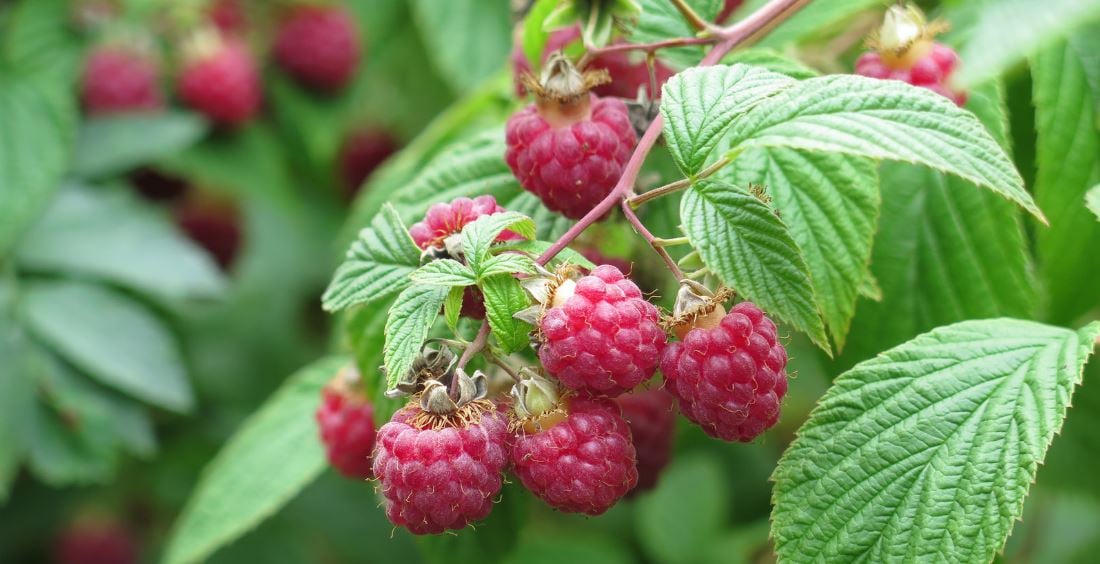Raspberries & Blackberries
 Raspberries Ripening on their Canes Photo: Ole Husby
Raspberries Ripening on their Canes Photo: Ole HusbyRaspberries and Blackberries
Berries in the genus rubus are also known as brambles, and they are among the easiest and most popular of all backyard fruits. They have a network of perennial roots that send up shoots, or canes, which usually live for two years. In the first year of growth, the canes are vegetative, producing only leaves. In the second year the same canes bear flowers and fruit, then die at the end of that season. Because the plants are continuously producing new vegetative canes, once the plants are established you can expect them to yield a crop of fruit every year.
Brambles are vulnerable to viruses and several other diseases. To reduce the risk of infection, avoid planting them on soil where a member of the nightshade family (tomatoes, peppers, potatoes, eggplant) or wild Rubus have recently been grown. For the same reason, it's best to locate raspberries and blackberries at least 500 yards away from any wild brambles.
Raspberries and other cane fruits have shallow root systems, so it's important to remove any weeds, which will compete for nutrients. The most common way of growing raspberries is in rows spaced 6 to 12 feet apart. This generous spacing allows mulching between the beds with weed fabric and wood chips, or cultivating between the rows with a rototiller,. It also ensures good air circulation around the plants (to limit disease problems), and permits easy access for picking from both sides of the bed.
To enjoy bountiful crops of these berries, the plants should be pruned annually and kept weed-free. A well-tended bed of brambles will produce for ten years or more before the original plants start to decline and need to be replaced.
Last updated: 01/23/2021
Print this Article:
Get the Dirt
Stay up to date on new articles and advice. Please fill out the information below.
